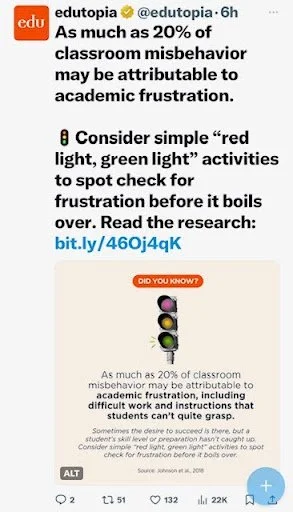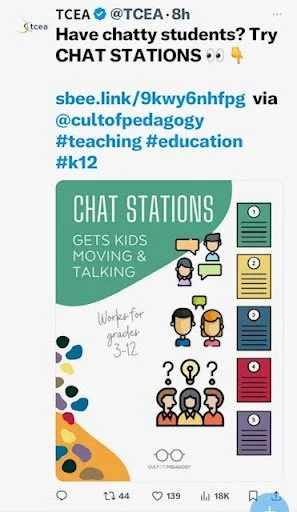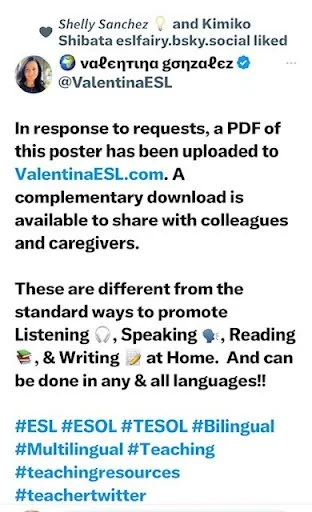Harnessing the Power of Social Media for Classroom Inspiration
I once attended a professional development event where the speaker empathetically stated that social media was not professional development. In fact, our presenter seemed to hate the idea of teachers using social media in any way. While social media is not professional development, it can be an incredibly helpful tool for educators seeking fresh ideas and innovative approaches to enhance their classroom experiences.
One of the primary advantages of using social media for classroom inspiration is the vast network of educators and education enthusiasts sharing their experiences and ideas. I am one of them. I love sharing information about National Board Certified Teachers, professional developments, conferences I attend or speak at, and picture books. Picture books are my passion. I follow a lot of authors who post about their processes and books. I have even won books for my class library by participating in polls and reposting information.
I also share instructional strategies and mentoring ideas in my posts. Because of my interaction on social media, I had the honor of hosting a Twitter chat for an organization. A Twitter chat is an online discussion that gathers various Twitter users to engage in a detailed conversation on a specific topic. These chats are organized events with a designated hashtag (#) for each tweet and are usually promoted across social media platforms. Typically, they last for about an hour. Leading this chat was a great opportunity for me to “meet” educators across the county. It was an exciting opportunity to foster dialogue and exchange ideas with diverse individuals with common interests.
Platforms like Threads, Instagram, Pinterest, and Facebook host countless teacher communities where educators exchange insights, lesson plans, and teaching strategies. These online communities foster collaboration and offer a supportive environment for teachers to learn from one another.
Using social media, teachers can stay current on educational trends, technologies, and tools. They can obtain up-to-date knowledge, research, and innovative teaching strategies to facilitate adaptation and innovation in the classroom by subscribing to educational influencers, experts, and educational organizations.
I follow many organizations, teachers, and educational influencers that I’ve found informative. Some of my favorites are Edutopia, TCEA, Ditch That Textbook, Colorin Colorado, Teacher2Teacher, and El Magazine. While I don't “like” everything they post, I’ve found many of their posts useful in spurring my imagination and thinking about ways to use what I read in my classroom.
Moreover, social media offers teachers a valuable platform to showcase their achievements and innovative practices and connect with a global network of educators for feedback and collaboration. Personally, I have reaped the rewards of engaging on various social media platforms. For instance, when I took on the role of lead mentor for the National Board Candidates of Color Mentor Support Providers, I became part of a highly commendable initiative dedicated to assisting candidates of color achieve national board certification. This experience not only bolstered my confidence but also served as a catalyst for my ongoing growth and knowledge sharing.
Social media offers a wealth of resources, connections, and inspiration for educators looking to enrich their classrooms. By joining the online educational community, teachers can tap into a vast pool of knowledge and creativity, ultimately benefiting their professional growth and their students' learning experiences. While social media is not for professional development, it can be inspirational. So, why explore social media's educational opportunities and make your teaching journey even more rewarding?



